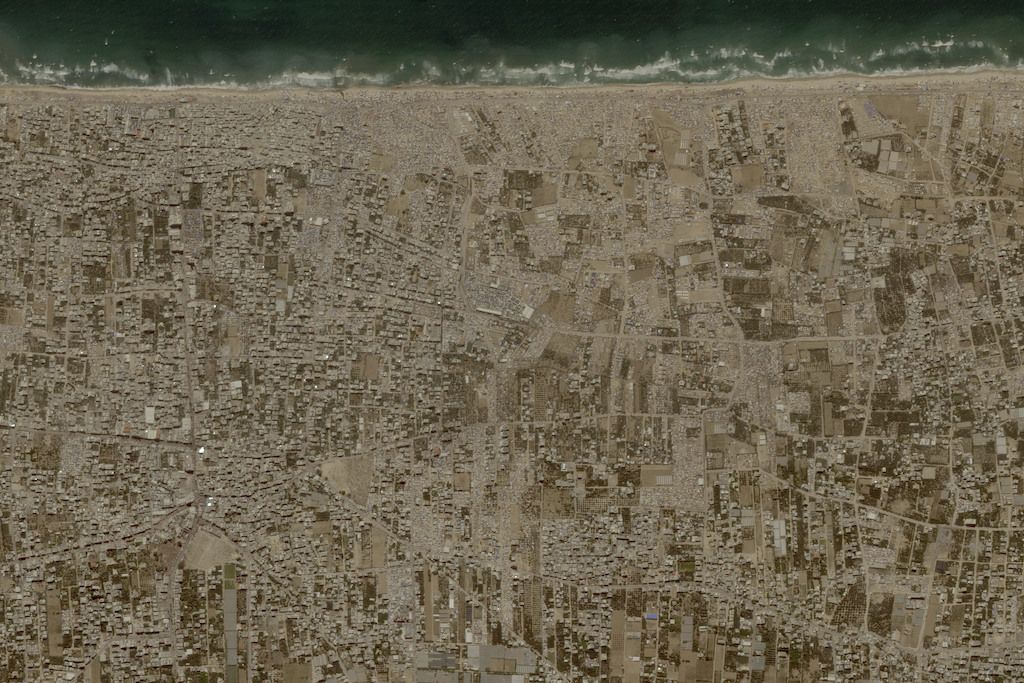
President Joe Biden claimed on Friday that Hamas is “no longer capable” of carrying out a repeat Oct. 7 attack as he urged the terrorist group to agree to Israel’s latest ceasefire proposal.
The admission by the president seemingly represents a new milestone reached by the Israeli military in its efforts to ensure Hamas can never carry out a similar attack.
“The Israelis are able to make this offer is because of some of the success they’ve had in degrading Hamas’ military capacity,” a senior U.S. administration official said in response to the president’s assessment. “I don’t think this offer would have been possible three months ago.”
The official continued, “Israel can make this offer without further risk to their own security because Israel has so degraded Hamas’s forces over the last eight months.
“As the president explained, at this point, of course, Hamas is no longer capable of carrying out another Oct. 7, its military capacity has been significantly eroded, and its leaders are dead or in deep hiding,” they said.
Biden, during a State Dining Room address at the White House, outlined the contours of the new proposal, which the official said the Israelis had agreed to; it was transmitted to Hamas on Thursday.
The three-phase plan would mimic previous ceasefire proposals, which begin with a six-week ceasefire and the return of women, children, and other vulnerable hostages; the release of “hundreds” of Palestinian prisoners; the withdrawal of Israeli troops from populated areas of Gaza; and the surging of humanitarian aid into the strip, the president said.
“As long as Hamas lives up to its commitments, the temporary ceasefire will, in the words of the Israeli proposal, the cessation of hostilities permanently,” Biden explained.
This proposal does not include exact details for what phase two will include. Many of those will be negotiated during the first phase, though the broad strokes include the release of all remaining living Israeli hostages and the withdrawal of all Israeli forces from Gaza.
The inclusion of language that Israeli forces would leave Gaza completely is one of the primary differences between this proposal and previous offers. Hamas has said previously it would not agree to any deal that did not include a permanent ceasefire and withdrawal of all Israeli troops.
Israeli leaders, including Prime Minister Benjamin Netanyahu, have repeatedly said they would not support a ceasefire proposal that called for a permanent end to the war before they accomplish their goals, which primarily is the lasting military defeat of Hamas and their removal from power in the strip.
Biden, in a tacit acknowledgement of Netanyahu’s domestic political situation, urged him and others to “stand behind this deal” even if there’s push back, presumably from the fringe right of his coalition.
Should Hamas agree to the proposal, the deal would seemingly end Israel’s operations in Rafah, at least for six weeks. Israel has carried out limited operations in the city despite international consternation about the potential for significant numbers of civilian casualties.

The ceasefire could continue beyond the six-week period if the negotiations remain ongoing, the president added.
“The second phase of the deal is for the release of all remaining hostages, and some of those hostages are male Israeli soldiers,” the U.S. official said, “and that will require a subsequent negotiation … for the ratio of a potential prisoner exchange and some other things. So everybody agrees that has to be worked out. We’re not going to work that out now, but it’ll be worked out over the first six weeks.”
CLICK HERE TO READ MORE FROM THE WASHINGTON EXAMINER
Phase three would include Hamas releasing the bodies of any of their kidnapped victims who had been killed and the start of the major reconstruction effort in Gaza.
The official acknowledged “there’s still pieces here to work out” but said the administration is “quite confident that we could get that work done.”







